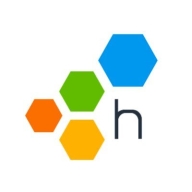

Azure Monitor and Honeycomb Enterprise are competing products in the field of observability and monitoring. Honeycomb Enterprise takes the lead with its advanced analytics features that provide deeper insights, making it ideal for detailed performance analysis.
Features: Azure Monitor integrates excellently with Microsoft products, scales efficiently, and offers a comprehensive monitoring platform. Honeycomb Enterprise specializes in advanced tracing, anomaly detection, and provides granular analytical capabilities essential for complex engineering environments.
Ease of Deployment and Customer Service: Azure Monitor is straightforward to deploy within Azure infrastructures and benefits from consistent Microsoft support. Honeycomb Enterprise may require a more complex setup but offers dedicated support for performance tuning and specialized analytical queries.
Pricing and ROI: Azure Monitor has lower initial costs for those invested in Azure, optimizing ROI through streamlined operations. Honeycomb Enterprise may involve higher upfront expenditure but offers significant long-term value through its advanced data insights and analytics capabilities.
| Product | Market Share (%) |
|---|---|
| Azure Monitor | 4.9% |
| Honeycomb Enterprise | 1.4% |
| Other | 93.7% |


| Company Size | Count |
|---|---|
| Small Business | 23 |
| Midsize Enterprise | 6 |
| Large Enterprise | 29 |
Azure Monitor is a comprehensive monitoring solution offered by Microsoft Azure. It provides a centralized platform for monitoring the performance and health of various Azure resources, applications, and infrastructure.
With Azure Monitor, users can gain insights into the availability, performance, and usage of their applications and infrastructure. The key features of Azure Monitor include metrics, logs, alerts, and dashboards. Metrics allow users to collect and analyze performance data from various Azure resources, such as virtual machines, databases, and storage accounts.
Logs enable users to collect and analyze log data from different sources, including Azure resources, applications, and operating systems. Azure Monitor also provides a robust alerting mechanism that allows users to set up alerts based on specific conditions or thresholds. These alerts can be configured to notify users via email, SMS, or other notification channels. Additionally, Azure Monitor offers customizable dashboards that allow users to visualize and analyze their monitoring data in a personalized and intuitive manner.
Azure Monitor integrates seamlessly with other Azure services, such as Azure Automation and Azure Logic Apps, enabling users to automate actions based on monitoring data. It also supports integration with third-party monitoring tools and services, providing flexibility and extensibility.
Overall, Azure Monitor is a powerful and versatile monitoring solution that helps users gain deep insights into the performance and health of their Azure resources and applications. It offers a wide range of features and integrations, making it a comprehensive solution for monitoring and managing Azure environments.
Honeycomb Enterprise is designed to optimize performance visibility, offering a robust platform for distributed system observability. It provides insights for complex data and aids in faster issue resolution, making it a valuable tool for IT professionals.
This tool is tailored for real-time data tracking and improving system performance efficiency. Enterprises benefit from its capacity to handle large-scale data, ensuring seamless operations and continuity. Honeycomb Enterprise helps teams to tackle data challenges head-on by delivering comprehensive analytics that enhance infrastructure reliability and performance metrics.
What Features Make Honeycomb Enterprise Stand Out?In industries like finance, e-commerce, and technology, Honeycomb Enterprise implementations demonstrate its utility in managing complex data flows and optimizing system reliability. Businesses in these sectors leverage its capabilities to maintain high service standards and operational efficiency.
We monitor all Application Performance Monitoring (APM) and Observability reviews to prevent fraudulent reviews and keep review quality high. We do not post reviews by company employees or direct competitors. We validate each review for authenticity via cross-reference with LinkedIn, and personal follow-up with the reviewer when necessary.